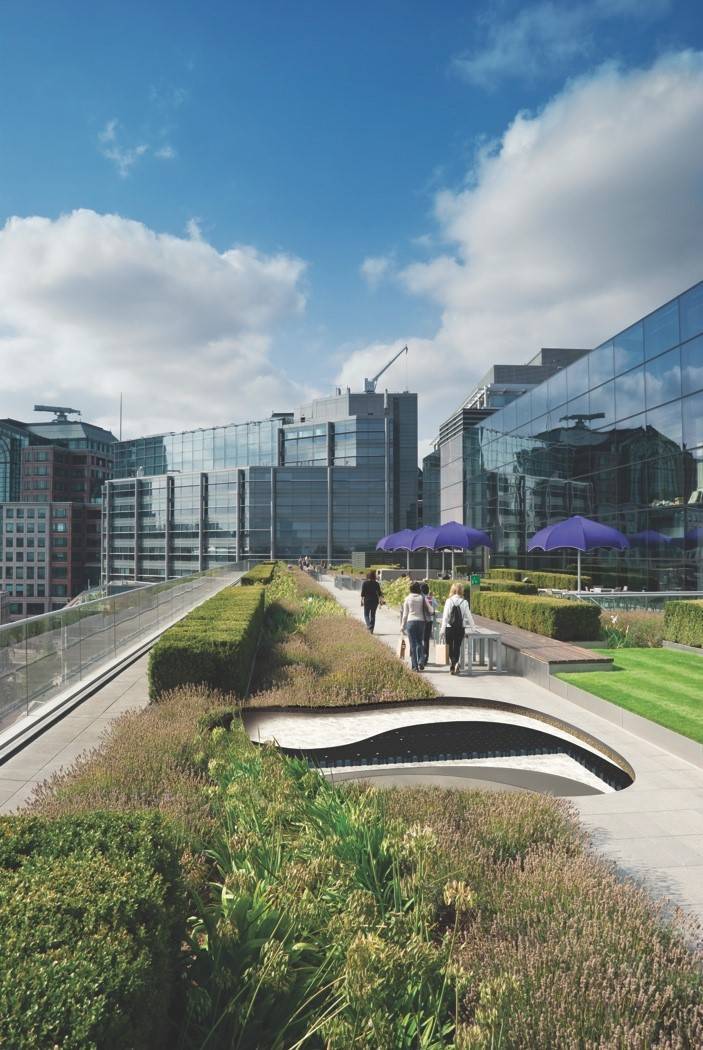ArborRaft Tree Root Protection
The damage casued by tree roots lifting pavements and disturbing services is now eradicated by using the ArborRaft system.

“Biodiversity is the greatest treasure we have. Its diminishment is to be prevented at all cost” - Thomas Eisner – prominent entomologist and ecologist – ‘the father of chemical ecology’
The term ‘Green Infrastructure’ is used to describe both the natural and semi-natural features which help to conserve biodiversity. From Blue-Green Roofs to public parks and woodlands, through strategic spatial planning, Green Infrastructure can be incorporated into a variety of applications, helping to maintain biodiversity within both rural and urban areas.
What is Biodiversity and why is it Important?
Biodiversity is not only one of the most vital features of our planet, but it’s also one of the most complex. Biodiversity refers to every single form of life on earth, from animals, plants and fungi - right down to the ecosystems in which they reside.
As the human population grows, there’s an increased demand for housing and industrial spaces - meaning there’s less space for wildlife, thus, destroying biodiversity. Additionally, the pollution in our oceans, rivers and lakes, as well as interference with the climate, is causing a problem for biodiversity too - with climate change posing one of the biggest risks to all living systems.
“Without biodiversity, there is no future for humanity” - Professor David Macdonald, Oxford University (block quote)
Human activity is the biggest threat to biodiversity, primarily due to climate change, but without biodiversity, the human race will cease to exist. It is responsible for a number of essential ecosystem services, such as food, fresh water and oxygen - all of which are essential for human life.
But thankfully, there are steps which can be taken in order to conserve both biodiversity and climate change - even with the ever-growing human population. From reducing our carbon footprint to preserving natural habitats, there are a number of ways in which biodiversity loss can be averted - all of which can be implemented on a global level. When it comes to the increased demand for housing, Green Infrastructure can ensure that biodiversity is conserved during the development of both rural and urban areas.
How can Green Infrastructure conserve ecosystems and maintain biodiversity?
Ecosystems are dynamic living structures which require a particular environment in order to remain biodiversity-rich. If these conditions are not met, they will be incapable of regeneration and their biodiversity value may fail.
It’s been widely recognised that Green Infrastructure is able to support and maintain ecosystems, helping to manage our natural capital. In fact, it has been named by the European Commission as an essential aspect of ecosystem maintenance in their EU biodiversity strategy. This strategy aims to stop Europe’s loss of biodiversity by 2020, focusing on improving the natural environment and improving quality of life.
Focusing on nature-based solutions will not only help to maintain healthy ecosystems, but it will also assist with the restoration of damaged habitats - primarily within built-up areas. In turn, this will provide a number of benefits, both to humans and the environment, including:
How can Green Infrastructure be implemented through spatial planning?

Green Infrastructure (GI) consists of a number of environmental features which function on different levels - from hedgerows and rain gardens to Blue-Green roofs and public parks. In order to qualify as a GI solution, it must offer more than just a ‘green space’ and provide value by forming part of a larger ecosystem, helping to maintain biodiversity.
Spatial planning differs from traditional land planning, as it aims to develop the land while influencing nature and its function within society. Green Infrastructure is a fairly new concept within spatial planning practices, but it is becoming a widely-recognised solution for achieving key planning goals in a more ecologically-sensitive way. Thus, providing an integrative solution for the management of built and natural environments in both rural and urban spaces.
In order to effectively implement GI solutions into new developments, strategic spatial planning is essential in order to:
When it comes to spatial planning, it’s important to identify key areas for habitat enhancement within rural and urban environments. This will ensure that the benefits of GI solutions are maximised. Some of the prime locations for GI projects involve spaces where GI can provide multifunctional benefits, such as alleviating flood risks while conserving natural habitats. In turn, this helps to achieve a balance between the economic, environmental and social targets for the project - giving it the best chance of success and providing benefits on a number of levels.
In this sense, the integration of Green Infrastructure and spatial planning provides a proactive approach to the conservation and maintenance of ecosystems and, on a broader level, biodiversity. Together, these two practices enhance each of both their individual and shared benefits in order to provide positive social-ecological interactions.
With the decline of biodiversity across the globe, along with the burgeoning population, it’s essential for action to be taken. Green Infrastructure provides a solution to this problem, helping to conserve biodiversity - despite the ever-increasing human population.
The damage casued by tree roots lifting pavements and disturbing services is now eradicated by using the ArborRaft system.
The ArborRaft combines tree soil with a geocellular raft system to create growing space for newly planted and existing trees in hard landscapes and
Permavoid 85 and 150 - Product Codes: PVPP85 and PVPP150 Permavoid units are available in two depths, 85mm and 150mm. Both are used to create a g